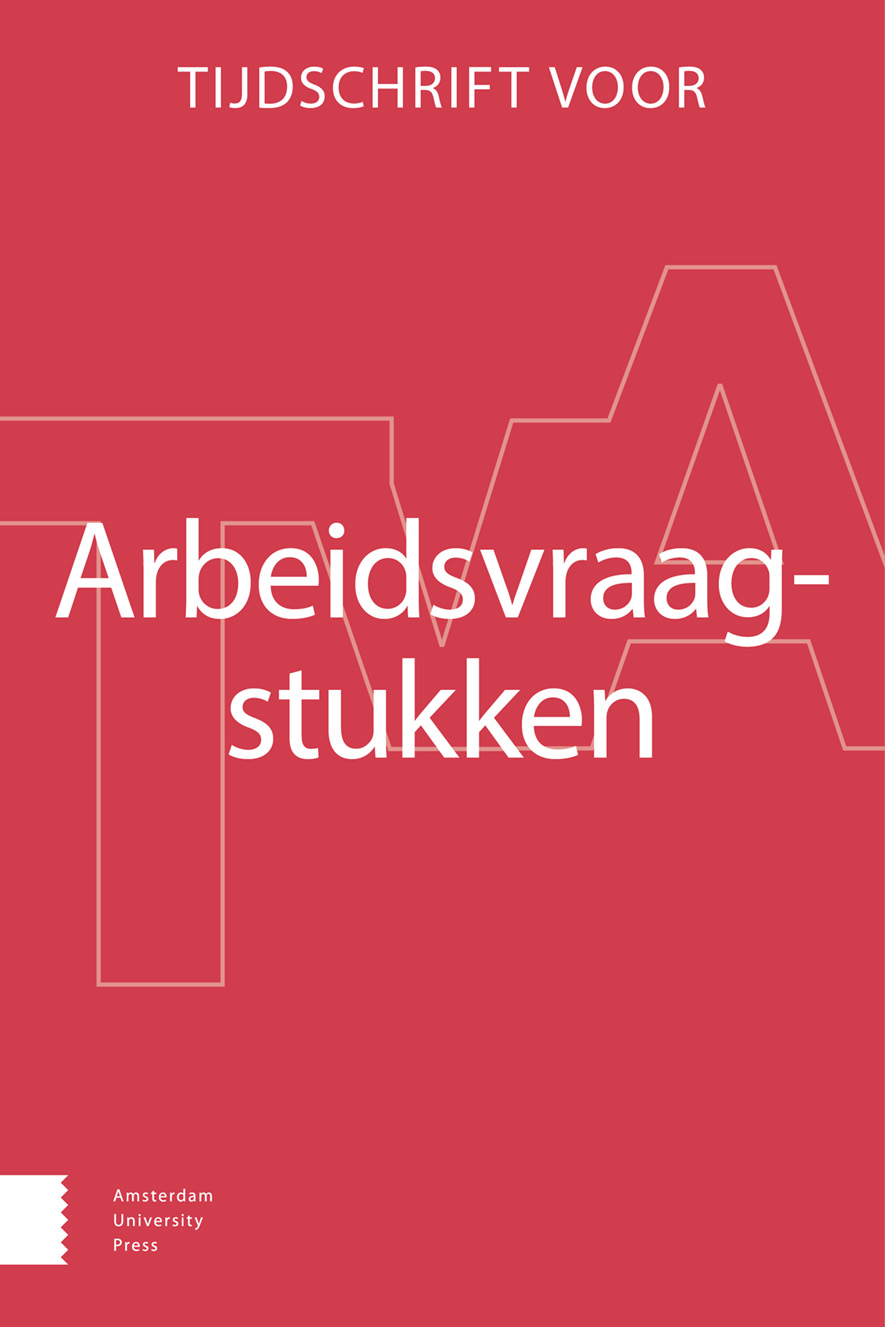-
oa Tijdconcurrentie of tijdgulzigheid?
Overuren van werknemers in post-Fordistische organisaties
- Amsterdam University Press
- Source: Tijdschrift voor Arbeidsvraagstukken, Volume 37, Issue 2, Jan 2021, p. 171 - 195
Abstract
Hoe komt het dat werknemers in post-Fordistische arbeidsorganisaties vaak meer uren werken dan zij eigenlijk zouden willen? Dit verband tussen ‘nieuwe’ arbeidscondities en een ‘mismatch’ tussen feitelijke en gewenste arbeidsuren is eerder vastgesteld, maar de precieze verklaring is in het vage gebleven. Het omvangrijke Nederlandse Time Competition onderzoek van kort na de eeuwwisseling suggereerde met zijn naam dat concurrentie tussen werknemers het dragende mechanisme vormt, maar deze suggestie is in het project destijds niet nauwkeurig getoetst. Dat is onbevredigend, temeer omdat in recentere literatuur een alternatief mechanisme wordt voorgesteld dat de tijdgulzigheid juist zoekt in door teamproductie aangedreven doeloriëntatie. Een dergelijke ‘joint production motivation’ verdraagt zich slecht met door individuele incentives aangestuurde concurrentieprocessen. De data van het Time Competition project, met informatie over 1114 werknemers uit 30 organisaties, bieden een nog onbenutte mogelijkheid tot een rivaliserende toetsing van beide verklaringen. Deze neemt de vorm aan van een mediatie-analyse, waarin het tijdconcurrentiemechanisme zich moet bewijzen en de op samenwerking gebaseerde theorie de nulhypothese stelt. De laatste komt als duidelijke winnaar uit deze strijd naar voren.


